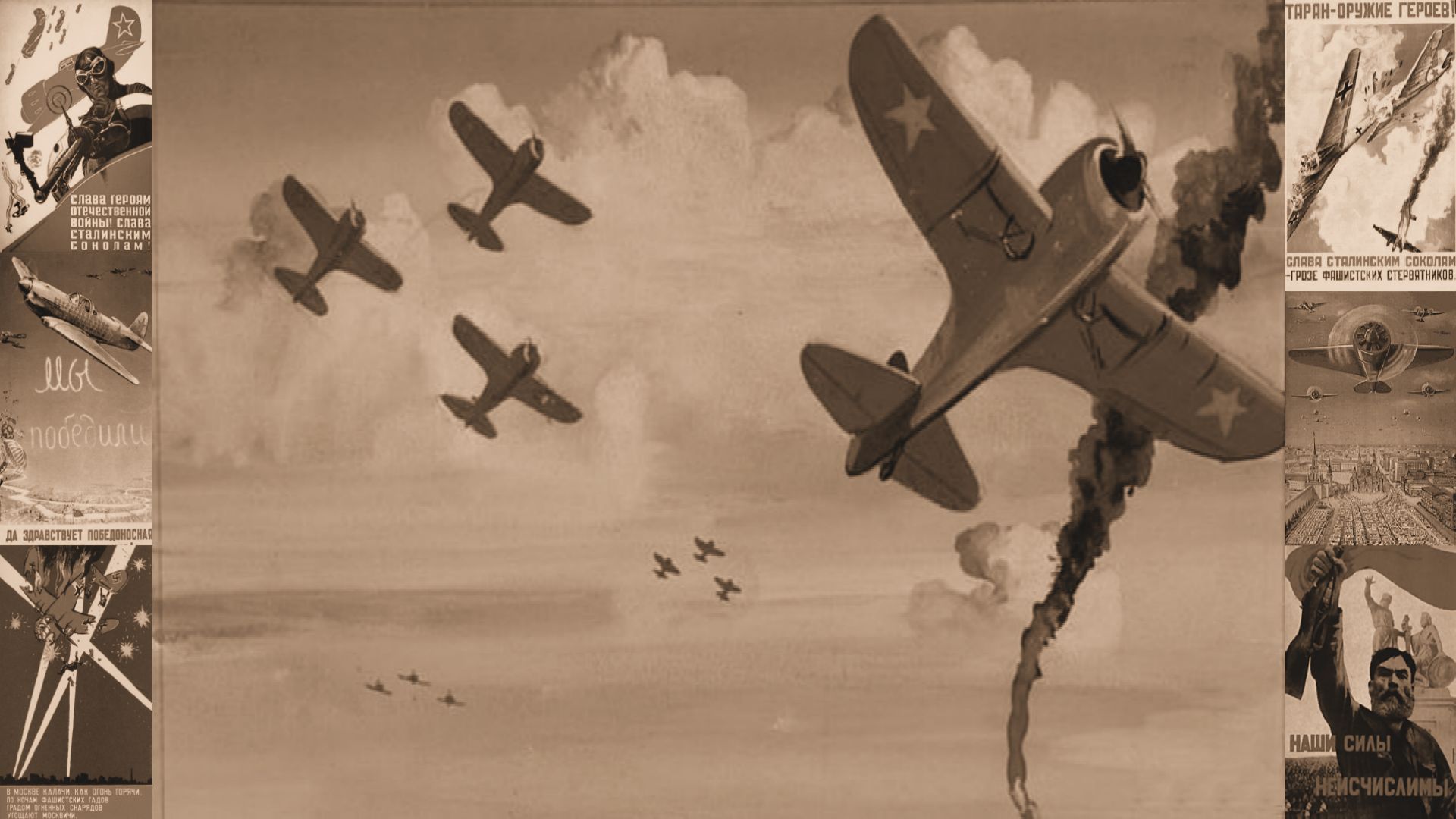The Petlyakov Pe-2 nicknamed Peshka (eng: "Pawn, or Little One") was a Soviet dive bomber aircraft used during World War II. It was regarded as one of the best twin engined ground attack aircraft of the war and it was also extremely successful in other roles of heavy fighter, reconnaissance and night fighter. It was one of the most important Soviet aircraft of World War II and was built in greater numbers than any other twin-engined combat aircraft except for the German Junkers Ju 88 and British Vickers Wellington.
Development
The Pe-2 was designed in a special technical prison run by the NKVD (sharashka) where Vladimir Petlyakov had been arrested and imprisoned in 1937. Petlyakov was put in charge of a team to develop a high-altitude fighter escort, under the designation VI-100 for the Tupelov ANT-42 which he had worked on and then imprisoned, being accused of delaying the design. The new aircraft was designated "Vysotniy Istrebitel 100 (VI-100 / High-Altitude Fighter 100)". The crew got into the aircraft using separate ventral hatches, which were equipped with quick-release latches to make bailing out easier and the pilot and navigator rode in separate cockpits joined by a long, sealed canopy that provided excellent visibility. The VI-100 featured tricycle landing gear, all with single wheels, with the main gear retracting backward into the engine nacellesas well as a retractable tailwheel. The VI-100 was to be armed with two ShKAS 7.62 millimeter machine guns with 900 rpg each and two ShVAK 20 millimeter cannon with 300 rpg , fitted in the nose. There was also provision for a fixed ShKAS machine gun in the tail with 700 rpg. Because of the effectiveness of the Ju87 'Stukas' were having in the war in Europe, it was decided that in early June 1940 to design a variant of the VI-100 for the dive-bombing role and Petlyakov's team was given just 45 days to come up with the new design. The aircraft was initially designated PB-100, but Joseph Stalin was impressed enough with Petlyakov to free him, and his name was permitted to be used in the aircraft's designation 'Pe'. The first aircraft flew on December 15, 1940, rushed through production without a prototype under severe threats from Stalin if a Pe-2 did not fly by the end of the year. Deliveries to combat units began the following Spring.
Back to Top
In Service
Several hundred Pe-2s had rolled off the production lines by the time of the German invasion of the Soviet Union on 22 June 1941. The German pilots found the fast Pe-2s difficult to catch and destroy. The Pe-2 regiments' operations were not always successful and the service pilots complained about insufficient defensive armament and survivability, there was also a great risk of fire and insufficient armour protection, especially for the navigators and gunners. German pilots soon discovered the limited sighting angles of the ventral gun mounting and its poor reliability. The ammo belt of the UBT machine-gun often jammed after the first burst of fire when shooting in extreme positions. The navigator and the radio operator were poorly protected. By late 1942 the design bureau had come up with needed improvements, adding more crew armor and upgrading the ShKAS 7.62 millimeter ventral gun with a Berezin UBT 12.7 millimeter gun. The hand-held dorsal UBT gun position was replaced by a turret, with an odd "weather-vane" fixture on top to balance the effects of wind resistance on the barrel when the turret was turned off the centerline. The turret design went through a number of iterations before a proper solution was found. Another noticeable change was simplification and streamlining of the nose, with the elimination of all the bombardier's glazing except for the bottom panels. As the Pe-2 was refined, it was thrown into battle after battle such as the battle for Stalingrad through late 1942 into early 1943, the Kursk counteroffensive in the spring of 1943, the Belorussian offensive in 1944 and the final drive on Berlin in 1945. Some of the Pe-2 pilots were women with some being squadron leaders led by Captains Nadezhda Fudutenko, Klavdia Fumicheva, and Maria Dolina who performed vital service during the battle for Borisov in June 1944. The Pe-2 had heavy flap controls and for the women pilots, the navigator had to assist them in the setting of the flap controls for take off.
Back to Top
Finnish Service
In 1941, after the outbreak of Continuation War Finland purchased six captured Pe-2 aircraft from Germany. These arrived at State Aircraft Factory facilities at Härmälä in January 1942, where the airframes were overhauled and given Finnish serial numbers. The seventh Pe-2 was bought from the Germans in January 1944, and it was flown to Finland at the end of the month. During the Continuation War, three Pe-2s were lost in accidents or technical failures, one was destroyed in bombing of Lappeenranta airfield, one was shot down by Soviet fighters and one went missing in action.
Final Production
The Pe-2 was continuously improved through the conflict, with modifications of armament, external stores, and equipment fit. Near the end of the war, a 'Pe-2M' with improved defensive armament was developed but not produced, though a 'Pe-2K' with provision for rocket-assisted takeoff boosters was built in small numbers. Several Communist nations flew the type after the war, when it became known by the NATO reporting name 'Buck'. Altogether, some 11,400 Pe-2s were manufactured during the war making it in the top twin engined plane constructed by the Soviet Union in World War 2.
Back to Top


